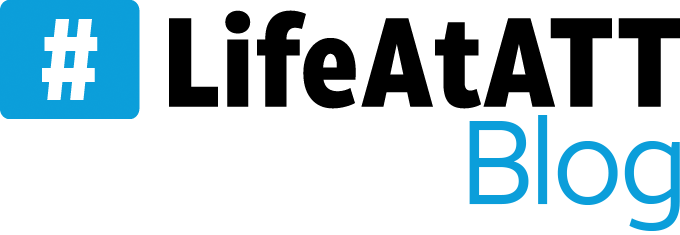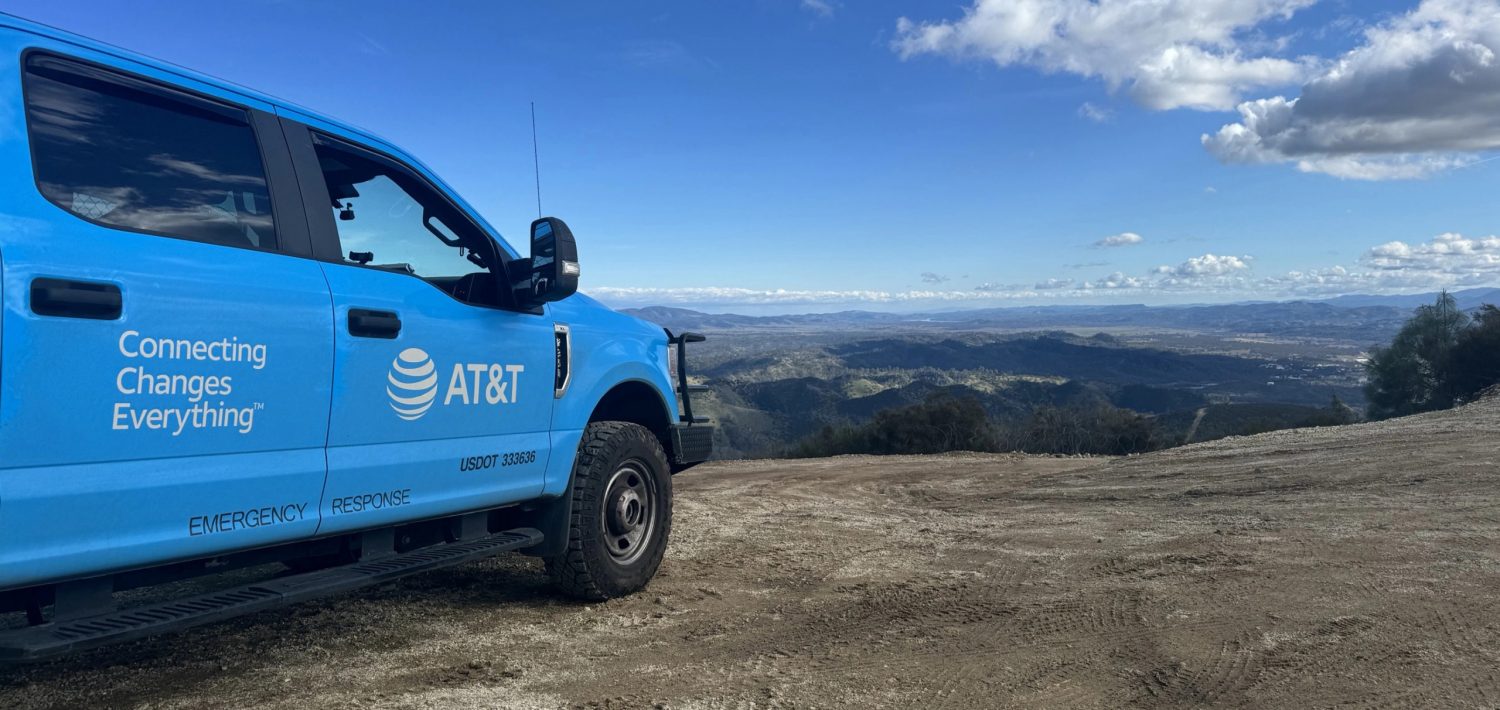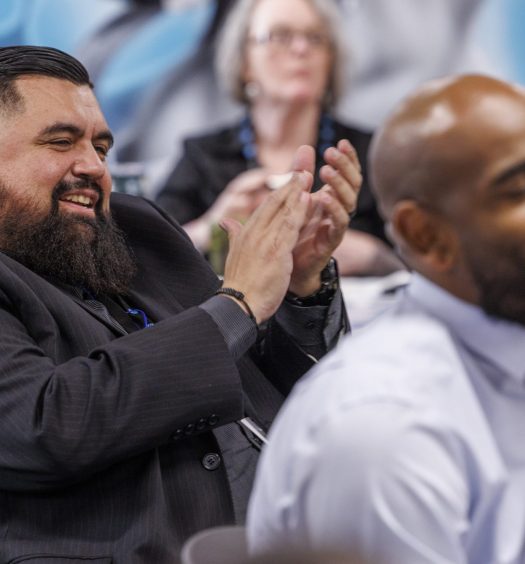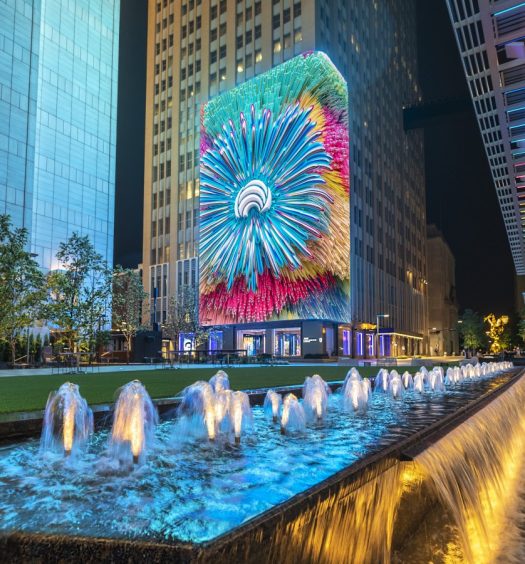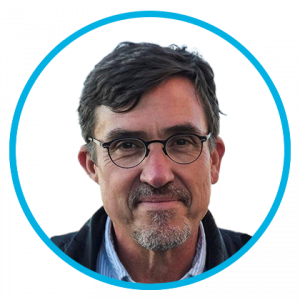 When disasters strike, communication becomes more critical than ever before. From first responders who need to stay connected to do their jobs to everyday people making sure their loved ones are okay, maintaining connectivity is essential.
When disasters strike, communication becomes more critical than ever before. From first responders who need to stay connected to do their jobs to everyday people making sure their loved ones are okay, maintaining connectivity is essential.
It’s a massive effort that requires collaboration with several organizations, both internal and external, as well as year-round preparation and the latest technology to restore service in disaster-stricken areas. The members of our Network Disaster Recovery (NDR) team – like Kelly Morrison, Principal Tech Business Management – are dedicated to making it happen.
The road to NDR
Kelly’s journey with AT&T is a story of dedication and resilience. From the harrowing days of 9/11 to leading disaster recovery efforts, he has consistently demonstrated his commitment and expertise.
Kelly began his career at AT&T in 1990, producing training materials during an exciting transition from paper to electronic documentation . “Being involved with a company centered around technology and communications is core to who I am,” he said. “I love technology and the work being done by AT&T piqued my interest.”

He first learned of NDR when he was tasked with helping to produce its technical documentation. Kelly and his team built NDR’s intranet site and assisted with its internal organization. He joined the NDR team fully in 1998 and described his career path since then as “like a snowball rolling downhill, getting bigger and bigger.”
“Some of the core stuff I did when I started, I still do,” he said. “I became Public Information Officer in 1999. I also cross-trained in other incident command roles. I’m a trained Hazmat technician. When we started using satellite COLTs, I trained on those. Since 2018, I’ve also helped deploy dedicated FirstNet® assets to support public safety in Colorado.”
Although it may sound like a lot of hats to wear, it’s all in service of getting the job done. Most crucially, it helps the team evolve and mobilize as quickly as possible.
“Our mission is to go beyond the norm to get things done. It gives AT&T a very rapid way to respond to unpredictable situations. I’m grateful for the support we receive from network leadership to try new things and be on the cutting edge.”
Always preparing
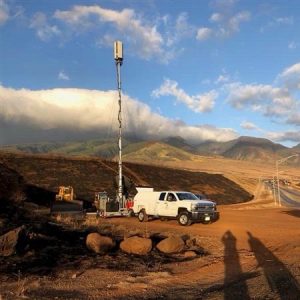 The work done by NDR doesn’t stop when storm season is over. This type of work takes constant practice and preparation, as these situations can be dangerous and require a high level of readiness. Extensive training happens year-round to ensure members are up to date on the protocols and technologies. Kelly checks this weekly to make sure support team members are properly trained and ready to be deployed if needed.
The work done by NDR doesn’t stop when storm season is over. This type of work takes constant practice and preparation, as these situations can be dangerous and require a high level of readiness. Extensive training happens year-round to ensure members are up to date on the protocols and technologies. Kelly checks this weekly to make sure support team members are properly trained and ready to be deployed if needed.
“Our training exercises are about making sure our responders are ready to go. We also do physical maintenance on the equipment like routining it monthly to ensure its updated and running smoothly. There’s also a lot of administrative work behind getting ready.”
Preparation isn’t just about running drills; it’s about continuously asking “how can we make this better?”
Tools of the trade
The technology used by Kelly and team is rapidly evolving. Learning about the latest in communications technology and figuring out how NDR can utilize it means they can do their job faster and more effectively.
One piece of equipment that AT&T uses in all markets is the mobile cell site. Using satellite backhaul, responders can set up service anywhere – from remote locations to places where towers have been knocked out by hurricanes.
“Something I’m excited about is the transition to using low Earth orbit satellites. This reduces the latency, increases the capacity, and the physical tech is smaller so it’s easier to deploy.”
“In 2006, it was amazing to set up a cell site in the middle of nowhere. Now, we can travel with our own wireless service right on the truck. It’s amazing.”
Being deployed
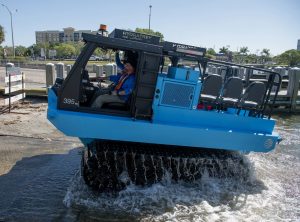 In his time with NDR, Kelly has deployed in many capacities. One of his first large-scale responses was 9/11. During the day, he worked as Public Information Officer, documenting the response. At night, he worked in command. The team set up satellite vans to provide service for those working on the site and played a part in getting Wall Street connected when it came back online the following week. “That’s the most severe disaster I’ve ever gone out for,” he said. “I hope that stays the case.”
In his time with NDR, Kelly has deployed in many capacities. One of his first large-scale responses was 9/11. During the day, he worked as Public Information Officer, documenting the response. At night, he worked in command. The team set up satellite vans to provide service for those working on the site and played a part in getting Wall Street connected when it came back online the following week. “That’s the most severe disaster I’ve ever gone out for,” he said. “I hope that stays the case.”
In 2022, Kelly served as incident commander for the Boulder wildfires. In this capacity, he oversaw several teams from AT&T. “In that role, you’re managing teams on the ground, looking after their health and safety and making sure the job gets done.”
He’s been part of the response of dozens of other incidents. Through them all, he’s been driven by a purpose to help those in need.
No matter where disaster strikes next, we know the NDR team will be ready.
Learn more about NDRFirstNet and the FirstNet logo are registered trademarks and service marks of the First Responder Network Authority.
